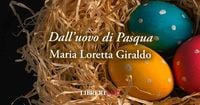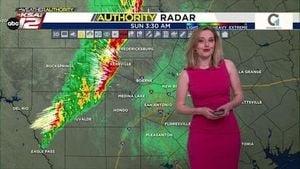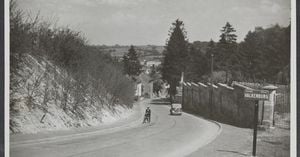Easter 2025 falls on Sunday, April 20, coinciding with the vibrant season of spring. This time of year, much like the Christian holiday of Resurrection, symbolizes rebirth, hope, and the strength of life that reemerges despite adversity. In this spirit, a quote often attributed to Pablo Neruda resurfaces, carrying emotional and symbolic weight: "They can cut all the flowers, but they will not be able to stop the spring." Although this famous saying does not appear in any official texts by Neruda, it has become a universal motto of resistance and hope over time.
The quote encapsulates the essence of spring, a force of renewal that no hand can erase, reflecting a life cycle that transcends fear, oppression, and destruction. It serves as a powerful metaphor, resonating today as much as it did in the past, and becomes a fitting message for Easter greetings. This phrase intertwines three levels of meaning, all deeply connected to the significance of Easter:
1. Spiritual and existential rebirth. Spring represents a return to life, much like Easter celebrates Resurrection: no winter can last forever. Every end is followed by a new beginning.
2. The strength of hope. The phrase "they will not be able" underscores a certainty: even if something is cut down, uprooted, or blocked, spring—like hope—cannot be stopped. It’s a promise to humanity.
3. The universality of the message. The quote is not tied to a specific religion; it can be used in secular, spiritual, or interfaith contexts, speaking directly to the heart in a simple yet profound manner.
Pablo Neruda, the renowned poet of humanity and nature, often celebrated the natural cycle of things, the beauty of the earth, the fragrance of fruits, and the life that springs from the seas and branches. In this phrase attributed to him, there is the power of resilient thought, directed not only toward love but also toward justice, dignity, and the beauty of simple things.
As we craft our Easter greetings, we might say: "Happy Easter! On this day of light and rebirth, let us be inspired by the words of Pablo Neruda: 'They can cut all the flowers, but they will not be able to stop the spring.' May this inner spring accompany each of us, bringing peace, courage, and hope." This message transcends seasons and hearts, inviting us not to give up, to believe in tomorrow, and to cultivate beauty even in the darkest times. After all, true spring always arrives.
In addition to Neruda's reflections, the poem "Dall’uovo di Pasqua" by Maria Loretta Giraldo emerges as a poignant contribution to the Easter narrative. This charming piece, often mistakenly attributed to the famed Gianni Rodari, offers a significant message of peace and brotherhood. It features a chick made of orange plaster with a turquoise beak, embarking on a journey to spread a vital message: "Long live peace, down with war."
Published in the collection "Rime per tutto l’anno" (Giunti Junior, 2008), Giraldo's poem resonates with contemporary themes, addressing the urgent need for peace amidst ongoing global conflicts. The chick, a symbol of Easter, serves as an ambassador of peace and fraternity, reminding us of the importance of educating for peace.
The chick's journey across countries and cities, writing its message on walls, in the sky, and on the ground, becomes a vivid illustration of innocence and hope. The poem's simple yet profound language is perfect for engaging children, encouraging them to internalize the values of peace and hope through playful rhymes.
Maria Loretta Giraldo, born in Vallonga (Padua), has made significant contributions to children's literature, publishing over a hundred books with major Italian publishers. Her works often explore themes of peace and brotherhood, making her an essential voice in contemporary literature for children.
As we reflect on Easter, it is crucial to acknowledge the broader context of our world. The poem "Dall’uovo di Pasqua" serves as a reminder that in a world filled with conflict and social tension, we must strive to embody the values of peace and love. The chick's message encourages us to engage in acts that promote harmony among people, starting with how we interact with one another.
Indeed, many fight for peace while simultaneously expressing hostility toward differing viewpoints. Tolerance, listening to others, and dialogue are essential components of true peace. As we share Easter greetings, let us remember the importance of these values.
Moreover, the Easter season is a time for renewal and reflection. The greetings exchanged during this period signify a collective desire for peace and reconciliation, especially in light of the violence that permeates our daily lives. The act of sending Easter wishes becomes a promise of an embrace that brings us all back to peace.
In the words of Rocco Scotellaro, who participated in the Easter ritual of Resurrection in 1947, the essence of Easter is about recognizing our shared humanity. His poem captures the spirit of renewal, where even the most marginalized voices find a place at the table during this sacred time.
Similarly, Gina Labriola, reflecting on her Easter experience from Persia, highlights the commonalities in rituals tied to rebirth and humanity’s shared need for renewal. Her poetic expression reminds us that despite cultural differences, the quest for peace and unity is universal.
As we celebrate Easter this year, let us embrace the messages of hope and renewal from both Neruda and Giraldo. Let us carry their words in our hearts, striving to become ambassadors of peace in our communities. In a world that often feels divided, may we find strength in unity and the promise of a brighter tomorrow.
Happy Easter to all, and may this season of renewal inspire us to cultivate peace and understanding in our lives and the lives of those around us.







